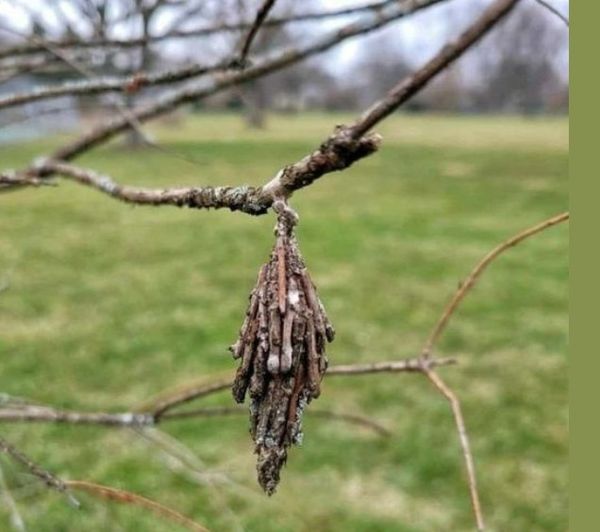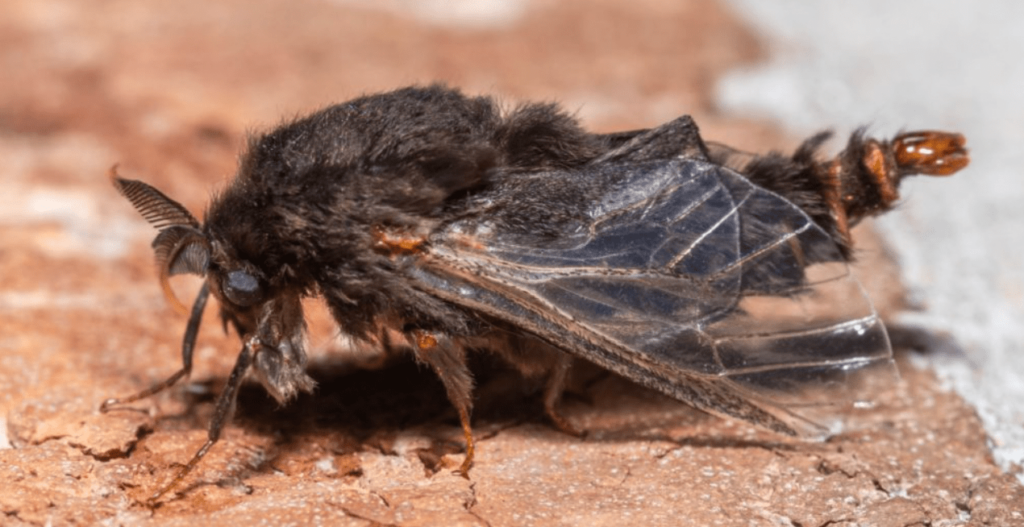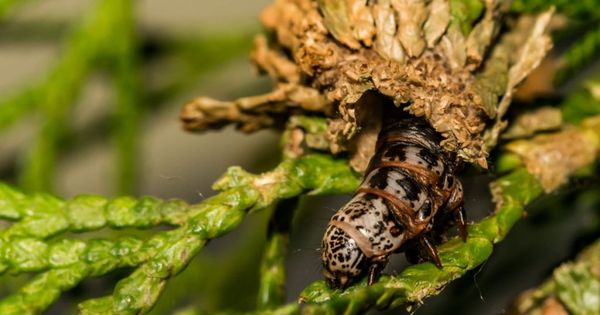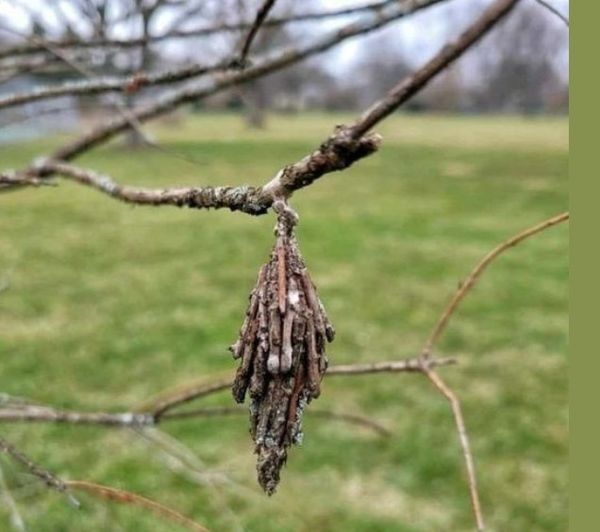
In the world of pesky creatures that harm our beloved trees, few are more notorious than the Evergreen Bagworm. Despite its misleading name, the Evergreen Bagworm is not actually a worm, but rather a moth in its larval stage. These sneaky insects can wreak havoc on both evergreen and deciduous trees, causing severe damage and even tree death if left unchecked. So, let’s dive into understanding this silent threat.
Evergreen Bagworms, scientifically known as Thyridopteryx ephemeraeformis, are small moths that belong to the family Psychidae. Though inconspicuous, they cause significant damage. They earn their name from the unique protective casing they construct around themselves, resembling bags or cases. These bagworm larvae attach plant debris like leaves, twigs, and bark to their bodies, using a silk-like thread they produce. Over time, these structures grow, becoming their portable shelter and camouflage, giving the impression of small bags hanging from tree branches.

Understanding the life cycle of Evergreen Bagworms is crucial in effectively managing and controlling their infestations. The reproductive cycle begins when the female adult lays her eggs inside her own bag, which is then left hanging on the tree after she passes away. These eggs remain dormant throughout winter and hatch in late spring or early summer, giving birth to tiny larvae.
The newly hatched larvae venture out of their bags, in search of a suitable host tree. Once they find a suitable location, they start building their bags using silk produced by special glands in their bodies. Initially inconspicuous, these bags periodically grow larger and more noticeable as the larvae develop and replenish their casing with additional plant debris.
As the larvae grow, they shed their skins several times to accommodate their expanding size, constructing a new bag for each stage of growth. By late summer or early fall, bagworm larvae typically reach their final instar, lasting for about six weeks, and become ready to pupate.
Within the protective case, the larvae undergo a transformation from their larval stage to their adult stage. Hidden from sight, the pupae develop inside the bagworm cases. After about two weeks, the adult moths crawl out by making a circular opening in the case. The larger, wingless female moths stay close to the original tree, while the smaller, darker, and clearer-winged males fly off in search of females.

At first glance, Evergreen Bagworms may seem harmless, but if left uncontrolled, they can seriously harm trees. These pests are voracious eaters that feast on the foliage of various tree species. They hide within their bags, benefiting from the protection and camouflage they offer.
The defoliation caused by bagworm larvae feeding on a tree’s leaves hinders its ability to photosynthesize and produce the necessary nutrients for growth and survival. This feeding activity weakens the tree, making it more susceptible to other illnesses, pests, and environmental stressors. If left untreated, Evergreen Bagworms can lead to tree decline and, in some cases, even tree death.
To protect your trees from the destructive nature of Evergreen Bagworms, it is crucial to preserve their health through prompt and efficient management. Here are some strategies and tactics to consider:
Prevention is always better than treatment when it comes to Evergreen Bagworms. You can reduce the chances of infestation and improve the overall health of your trees by implementing the following practices:
- Regularly inspect your trees for signs of bagworm infestation, such as bags hanging from branches.
- Prune and remove any bags you find, especially during the winter when the eggs are dormant inside them.
- Encourage natural predators like birds and parasitoid wasps that feed on bagworms by providing suitable habitats, such as birdhouses and flowering plants.
- Maintain proper tree nutrition and irrigation to keep them healthy and resilient against infestations.
By keeping your trees healthy and implementing preventative measures, you can safeguard them against the silent threat of Evergreen Bagworms.
Although Evergreen Bagworms may be tiny and barely noticeable, they have the ability to silently kill trees. By understanding their life cycle, appreciating their destructiveness, and adopting good management practices, you can defend your trees from these sly intruders.
Regular inspections, preventative measures, and maintaining healthy trees will go a long way in stopping infestations and preserving the beauty and vitality of your landscape. Don’t let the silent threat of Evergreen Bagworms take away the joy your trees bring.





